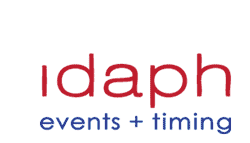Your watch is awesome – Except when it isn’t
 GPS fitness watches have revolutionized the way we approach personal fitness. These high-tech companions offer an unparalleled opportunity to set concrete goals, track our progress over time, monitor our health metrics, and bring a layer of accountability that was harder to maintain in the past. However, as with any technology, it's crucial to understand not only their benefits but also the limitations and responsibilities they entail.
GPS fitness watches have revolutionized the way we approach personal fitness. These high-tech companions offer an unparalleled opportunity to set concrete goals, track our progress over time, monitor our health metrics, and bring a layer of accountability that was harder to maintain in the past. However, as with any technology, it's crucial to understand not only their benefits but also the limitations and responsibilities they entail.
Setting Goals and Tracking Progress
The primary allure of GPS fitness watches is their ability to keep precise records of our physical activities. Whether you're training for a marathon, trying to improve your cycling time, or simply monitoring your daily steps, these devices provide immediate feedback and detailed logs of your workouts. This real-time data empowers users to set realistic goals based on their personal activity levels and to see tangible progress. This can be incredibly motivating, turning abstract ambitions into achievable targets.
Adding Accountability
Another significant benefit is the role of these watches in enhancing accountability. With features like sharing capabilities, you can connect with friends or coaches who can follow your progress and support you. For many, knowing that your stats and activity logs can be viewed by others adds an extra layer of motivation to stick to your fitness plans.
Measuring Like Never Before
Modern GPS fitness watches come equipped with a variety of sensors that measure everything from your heart rate to your sleep patterns, providing a holistic view of your health. This allows for tailored fitness programs and can help in early detection of potential health issues. However, it's here that we must also tread with caution.
Understanding the Margins of Error
While the convenience and capabilities of GPS fitness watches are immense, they are not infallible. Studies and user reports indicate that these devices can have a margin of error. For example, the accuracy of distance tracking can vary by up to 10%, influenced by factors like the GPS signal strength, the technology used by the watch, and environmental conditions. Similarly, heart rate sensors might show discrepancies based on their placement on the wrist and the type of exercise being performed.
The margin of error is something we deal with frequently at iDaph Events. After a race, we often hear or receive social media comments regarding the length of our course being inaccurate. Many factors can contribute to this (read more about course distances) but the biggest culprit is usually the GPS watch. To illustrate this, we recently visited a local park with a simple walking path. We walked the same route on the path several times with a name-brand fitness watch. The margin of error can be seen very clearly in the picture below.

It's important to remember that our GPS watches, although useful, should not be seen as the gold standard for health or distance metrics. For instance, a study published in the Journal of Personalized Medicine tested various fitness devices and found that while they provided valuable insights into physical activity patterns, discrepancies in energy expenditure, heart rate and step count were common.
With Great Watches Comes Great Responsibility
As we continue to integrate more advanced technologies into our daily lives, we must also embrace the responsibility that comes with them. Fitness watches are tools—extraordinarily effective tools—but they should complement, not dictate, our understanding of our bodies and our health. Relying solely on a watch for health metrics or ignoring the inherent errors can lead to overconfidence in inaccurate data, which might skew our perception of our actual health and fitness. Likewise, a fitness watch is not ideal for accurately measuring exact distances.
Conclusion
So, should you keep using your GPS fitness watch? Of course! The advent of GPS watches has provided us with an amazing array of tools to enhance our fitness journeys. They offer a level of interaction and personalization that was unimaginable just a decades ago. However, it is vital to approach this technology with an informed perspective, recognizing both its potential and its limitations. By doing so, we ensure that we use these tools effectively and responsibly. Plus, understanding this may save you from having to leave a negative review after your next race 😉.



